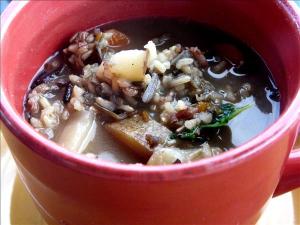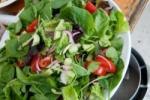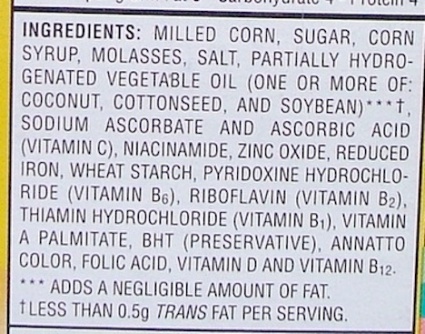From my personal experience, my favorite benefits of a whole-food, plant-based lifestyle is the increased clarity of mind and energy levels. I can feel it that I am consuming what my body wants and needs on a cellular level. I love feeling overall so clean and good. A plant–based diet emphasizes vegetables, fruits, legumes, and whole grains. It also reduces or eliminates meat and dairy intake.
Several benefits of a plant-based lifestyle include:
- Cancer protection. Studies of vegetarians show that death rates from cancer are only about one-half to three-quarters of those of the general population. While a plant-based diet prevents cancers and diseases, it is even so powerful as to reverse the diseases after diagnosis.
- A healthier heart. Specifically, since cholesterol is only found in animal products such as meat and dairy, they have lower cholesterol levels, and heart disease is less common in vegetarians. They also consume less saturated fat, keeping arteries plaque-free.
- A healthy blood pressure. An impressive number of studies show that vegetarians have lower blood pressure than nonvegetarians.
- Lower blood sugar levels. Diabetics can often reduce or even eliminate the need for medication by adopting a plant-based lifestyle. Low blood sugar levels are also good for weight management.
- Increased fiber and decreased unhealthy fat. This keeps you clean and free of risky plaque and fat build-up, reducing risk for heart disease, heart attacks, and strokes.
- Loaded with phytochemicals. Phytochemicals are cancer-fighting substances.
- Less likely to form either kidney stones or gallstones.
- Lower risk for osteoporosis. Further, those that eat little or no animal protein are at even lower risk for osteoporosis. A high intake of animal protein encourages the loss of calcium from the bones. Replacing animal products with plant foods reduces the amount of calcium lost. It’s true — people who live in countries where the diet is typically plant-based have little osteoporosis, even when calcium intake is lower than that in the dairy-consuming countries.
Control your quality of life by consuming a plant-based diet. Filling your plate with fruits, vegetables, legumes, and grains is the best means for disease prevention and even disease reversal. Equally important, a plant-based diet is the best means for feeling good inside and out, everyday. While it keeps your arteries clean and your cells happy, it also brightens your skin, eyes, and hair. Weight management is just an added bonus.
Eat your vegetables! A few consistent musts for your grocery list: broccoli, spinach, apples, and blueberries (I like the frozen bag at Costco). Also, try steaming kale and adding it to soup. Try quinoa! Add black beans to dishes and salads! There are endless options for a delicious, healthy, plant-based lifestyle. Wholefoodmommies.com is a great resource for recipes.
Last week a friend of mine made the comment that “everyone gets cancer now!” He then proceeded to ask why. He is right; cancer rates are skyrocketing and it is now the second leading cause of death in the United States behind heart disease (which is also closely linked to diet and lifestyle).
According to “Cancer Facts and Figures 2011,” “Cancer is a group of diseases characterized by uncontrolled growth and spread of abnormal cells. Scientific evidence suggests that about one-third of cancer deaths expected to occur in 2011 will be related to overweight or obesity, physical inactivity, and poor nutrition and thus could also be prevented. About 1,596,670 new cancer cases are expected to be diagnosed in 2011. In 2011, about 571,950 Americans are expected to die of cancer, more than 1,500 people a day. In the US, cancer accounts for nearly 1 of every 4 deaths.”
While vegetables, fruits, legumes, and whole grains are the emphasis of a plant-based, whole-food lifestyle, limiting meat and dairy is also an important aspect. But, why? The science is consistently clear and unmistakable that meat and dairy consumption promote cancer growth along with many additional health concerns (high blood pressure, cardiovascular disease, and etcetera). Doctor T. Colin Campbell led the China Project, the most comprehensive study of health and nutrition ever conducted, and discovered that cancer growth could literally be turned on or off by controlling animal protein consumption.
1. Milk and Dairy.
About 20 percent of our milk is genetically engineered, technically known as rBGH (recombinant Bovine Growth Hormone), which contains high levels of a natural growth factor known as IGF-1 (Insulin-like Growth Factor one). This survives digestion and is readily absorbed from the small intestine into the blood. Increased levels of IGF-1 have been shown to increase risks of breast cancer in 19 scientific publications, risks of colon cancer in 10 scientific publications, and prostate cancer in seven scientific publications. Of further concern, increased IGF-1 levels block natural defense mechanisms against cancers.
2. Meat.
US cattle are implanted with natural or synthetic sex hormones 100 days prior to slaughter in order to increase their meat yield. Not surprisingly, our meat is contaminated with high levels of sex hormones, which cause certain cancers, particularly breast cancer and prostate cancer. Based on these concerns, and as warned by the Cancer Prevention Coalition and five leading national experts, our meat poses increased risks of hormonal cancers, which have escalated since 1975: breast by 23 percent, prostate by 60 percent, and testis by 60 percent. These hormones are causing breast cancer and prostate cancer to be the leading sites for all cancer cases and deaths in the United States (250,000 cases for prostate cancer and another 250,000 cases for breast cancer in 2011). Meat has not been and is still not monitored for sex hormone levels by the USDA or FDA. Breast cancer rates are dramatically lower in countries where diets are plant-based. When people from those countries adopt a Western, meat-based diet, their rates of breast cancer soar. Vegetarians also have significantly lower rates of colon cancer than meat-eaters. Colon cancer is more closely associated with meat consumption than any other dietary factor.
“Increasing animal-based protein consumption up to dietary levels … associates with higher blood cholesterol levels and more atherosclerotic plaque (even more than saturated fat), greater risk of cancer (caused by multiple mechanisms), greater bone loss of calcium and higher risk of osteoporosis, greater risk of Alzheimer’s disease, and greater formation of kidney stones, to name just a few chronic diseases.” – T. Colin Campbell
Though cancer and disease rates are on the rise, adoption of a whole-food, plant-based diet is also rising. On December 1, 2011, the article “New Diet Changes Lifestyles” was a front-page story of Brigham Young University’s “The Daily Universe” and discussed benefits of a plant-based diet. My health professor commented that this is not a new diet, but actually an ancient diet that we have simply strayed from through Westernization. The New York Times December 29, 2011 front page contained an article titled “No Meat, No Dairy, No Problem.” Nutritional confusion has overwhelmed the public for several decades, but nutritional truths are becoming more widely known and accepted. The consistent evidence of sound scientific research has become impossible to ignore. Start your whole-food, plant-based journey now!
















